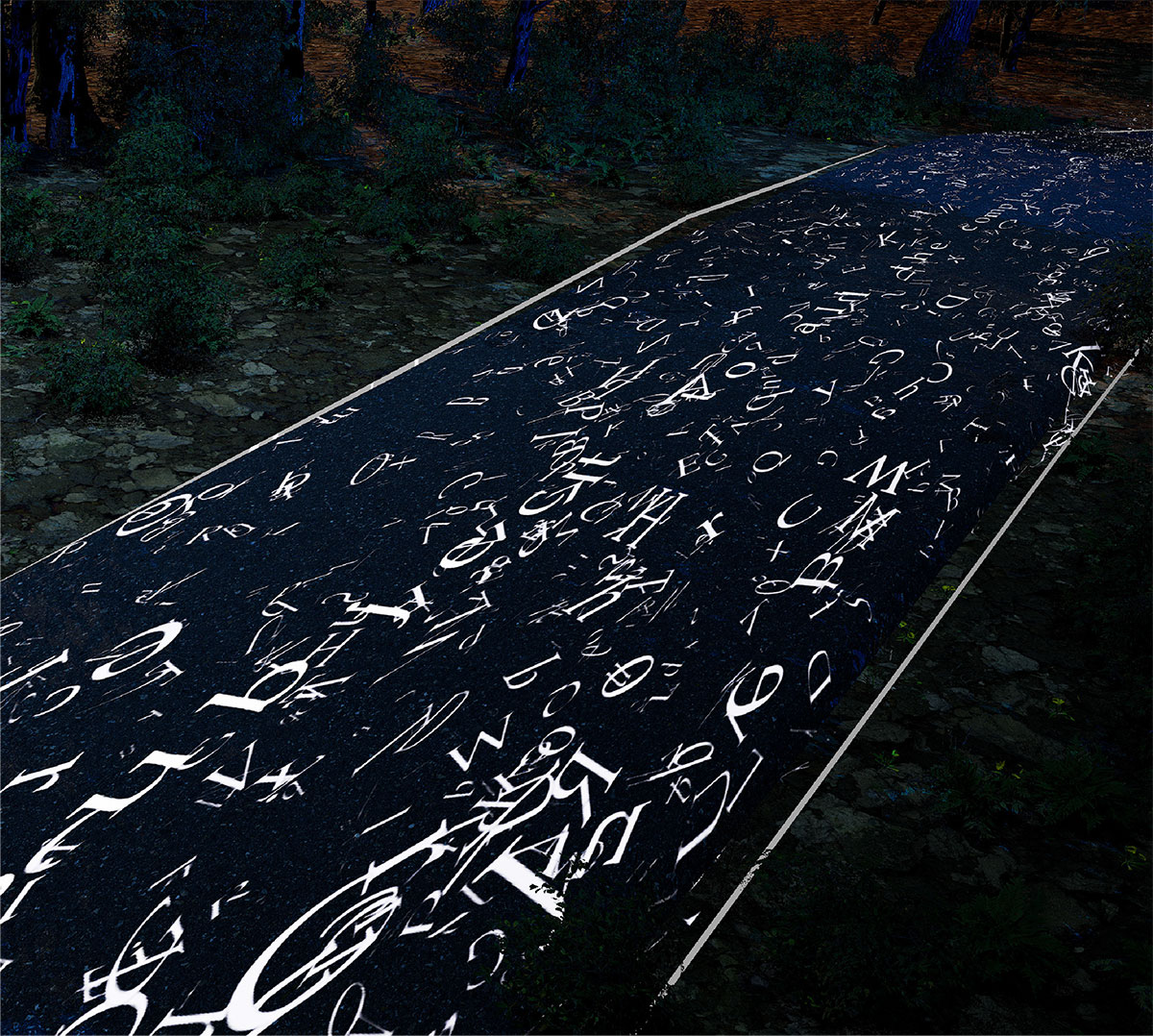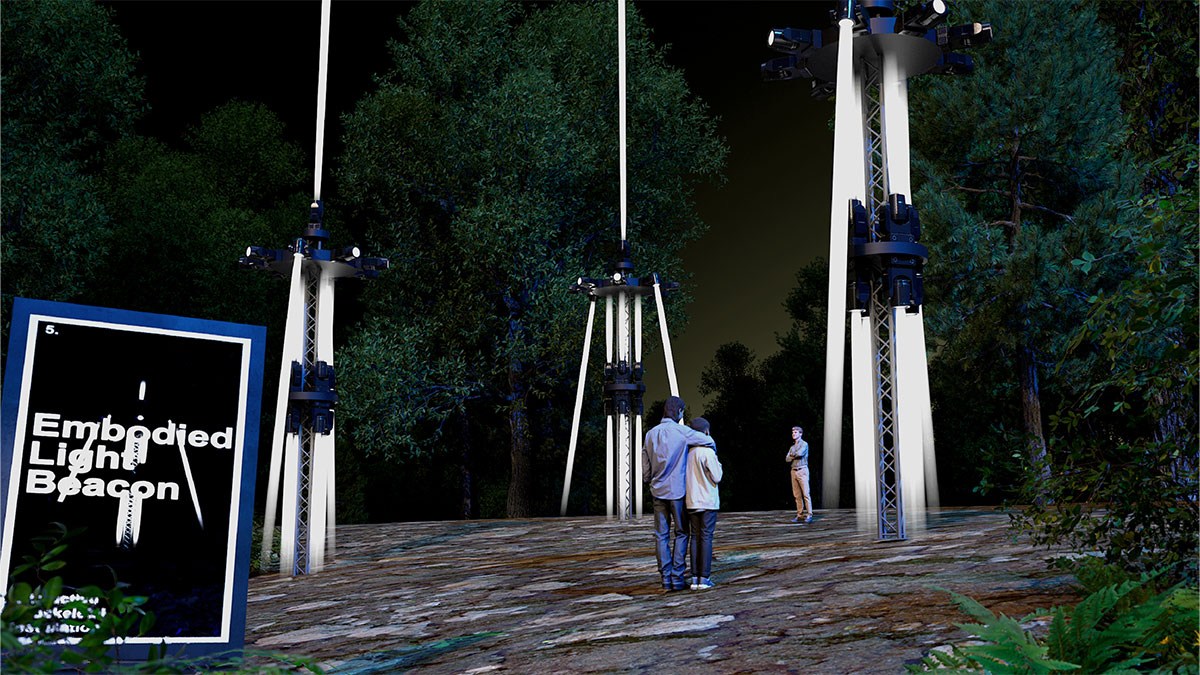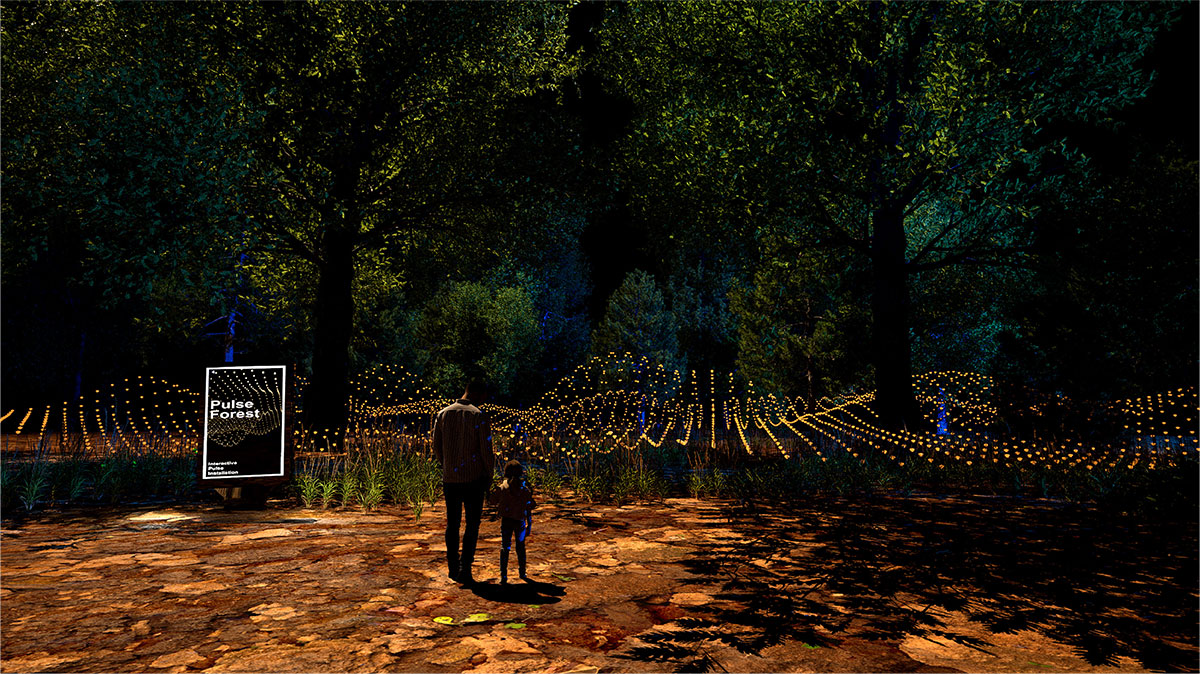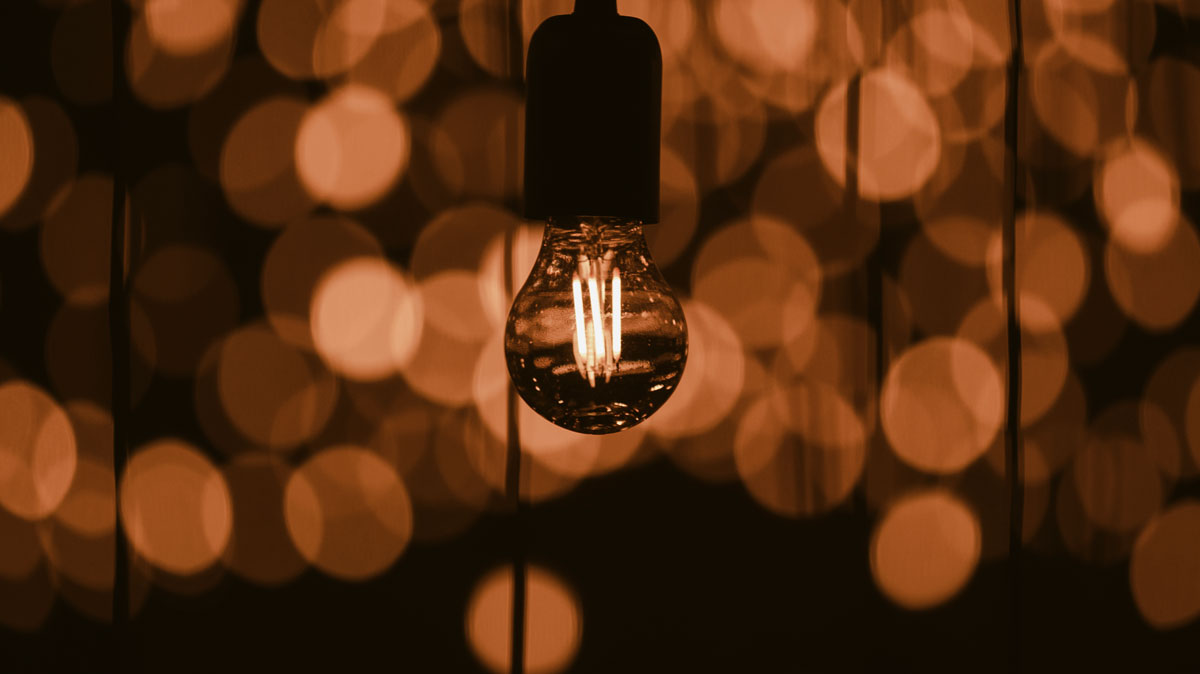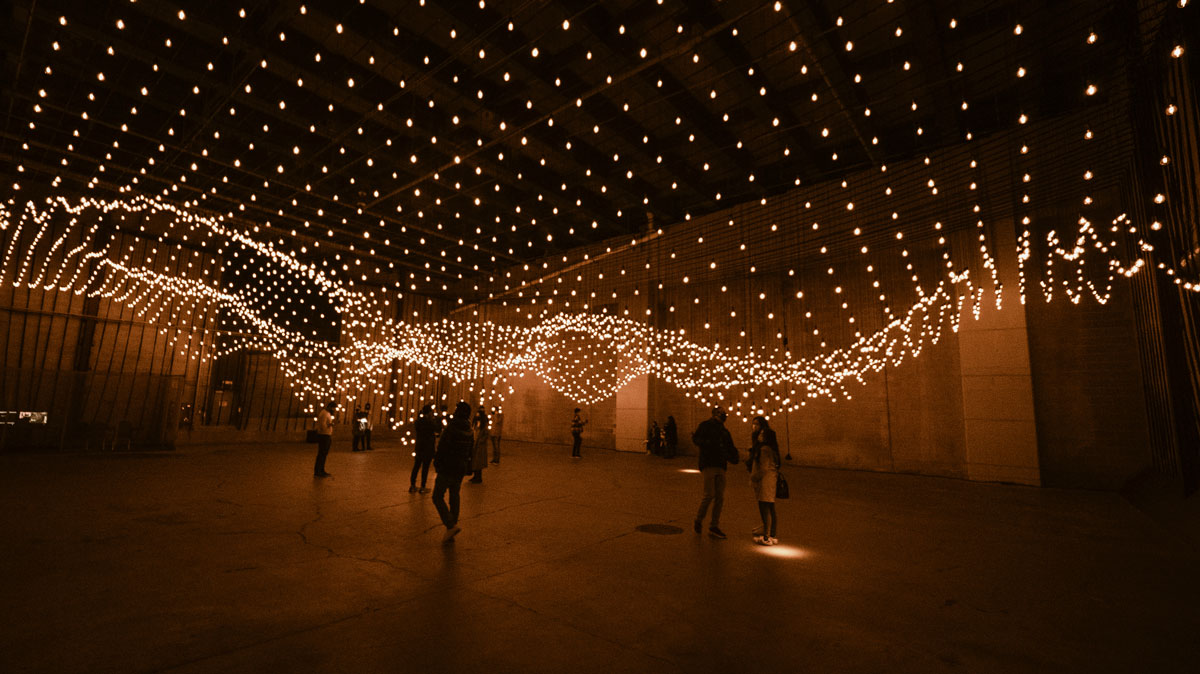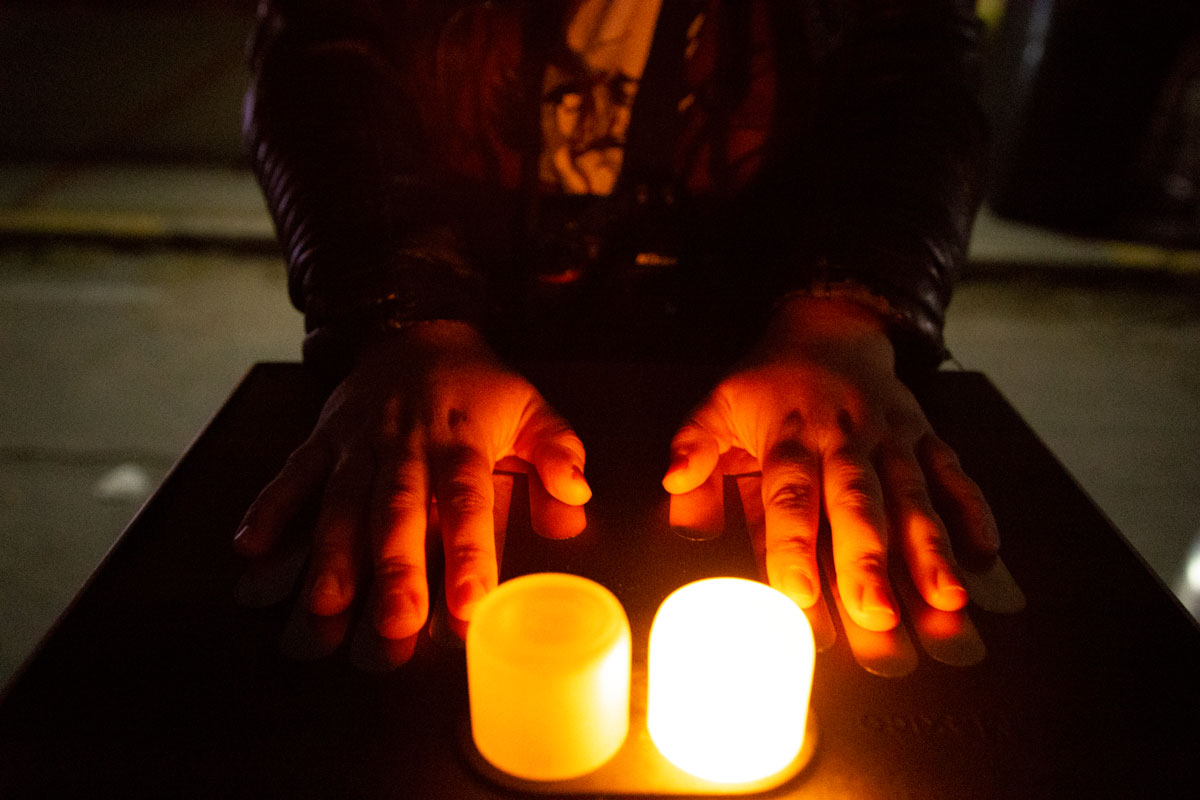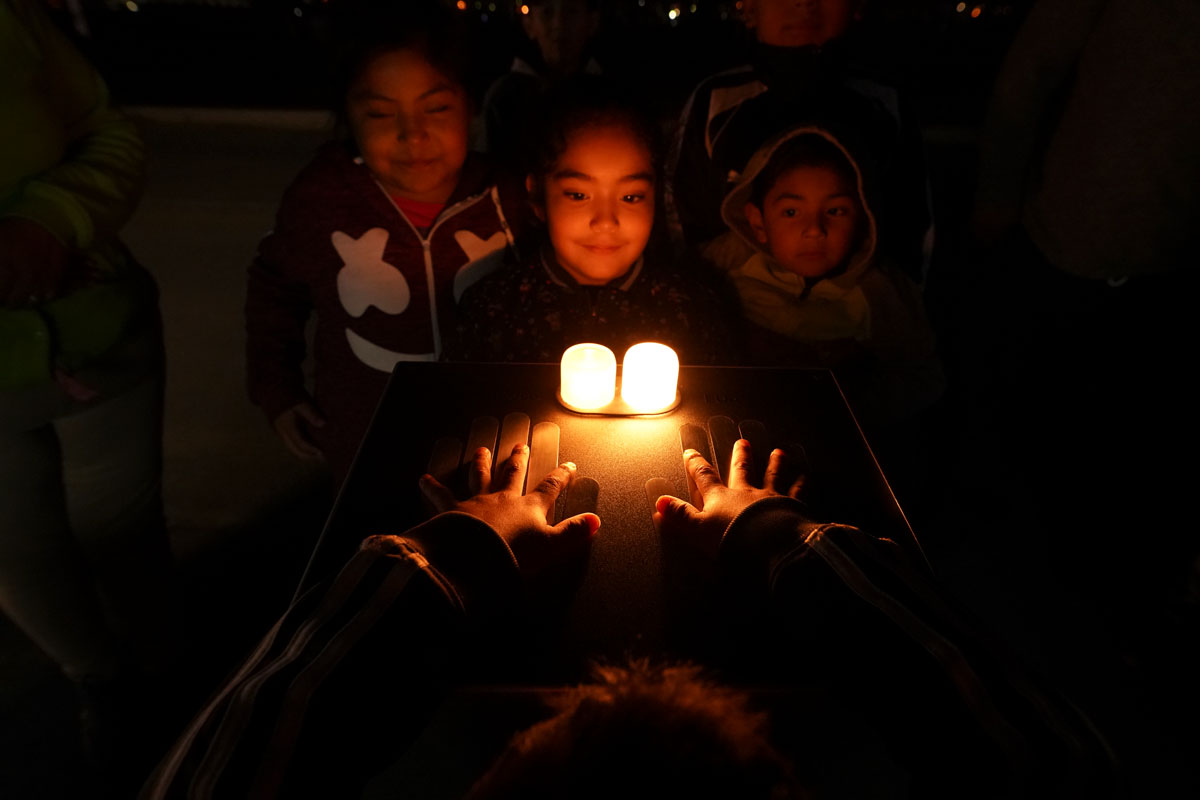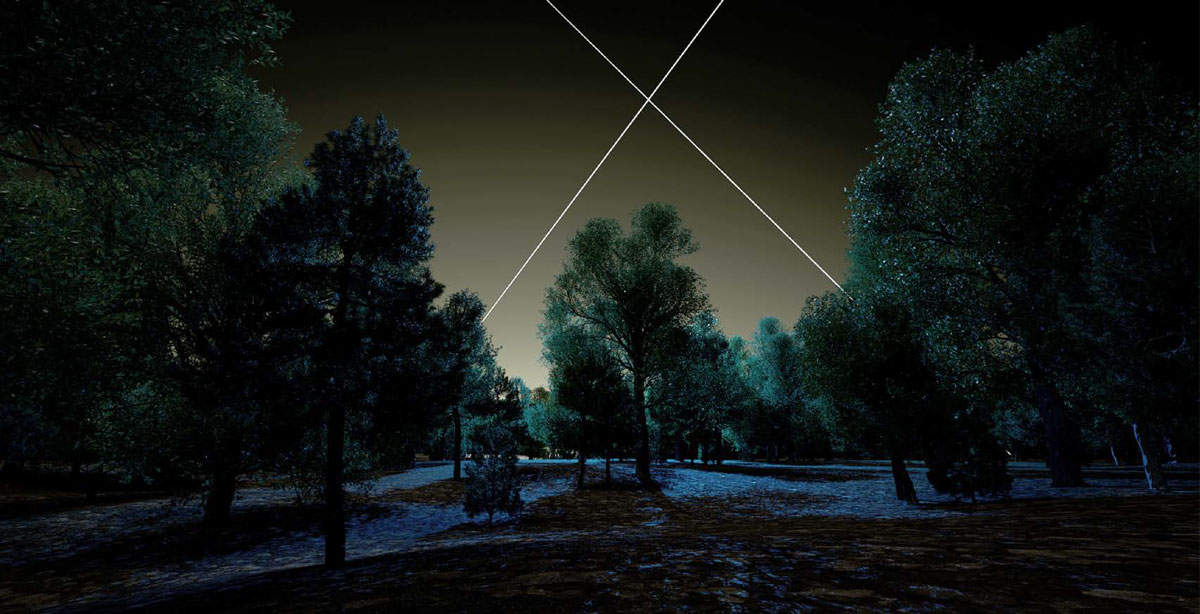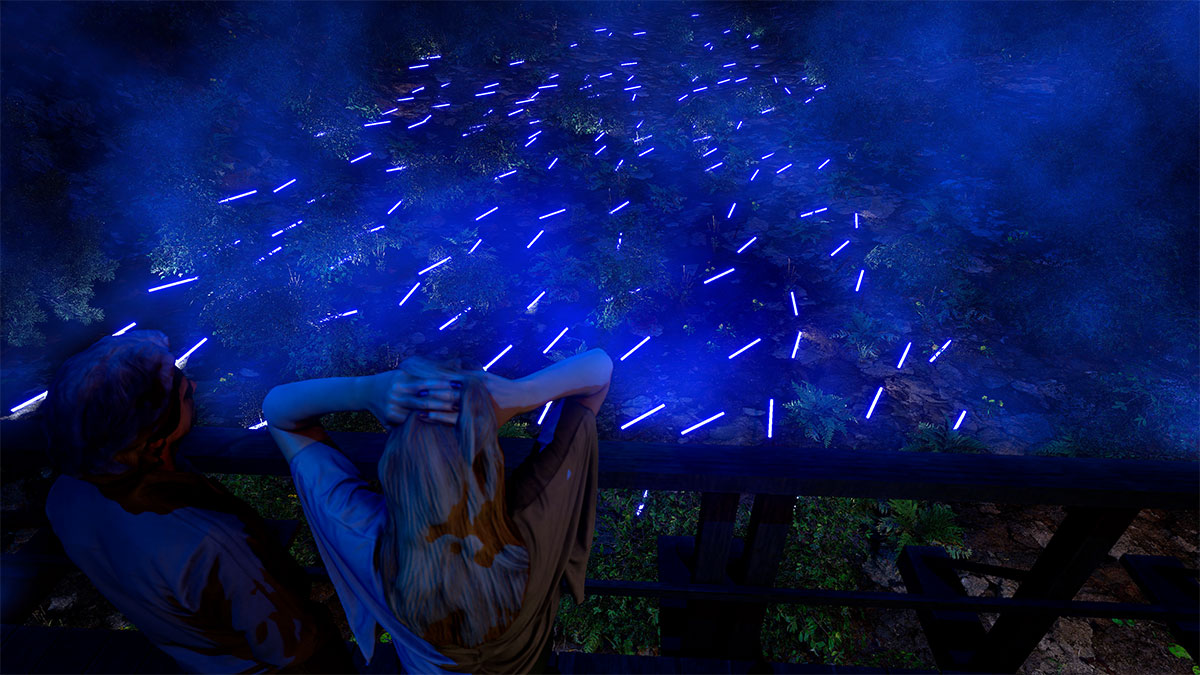PREVIEW: Rafael Lozano Hemmer-Listening Forest
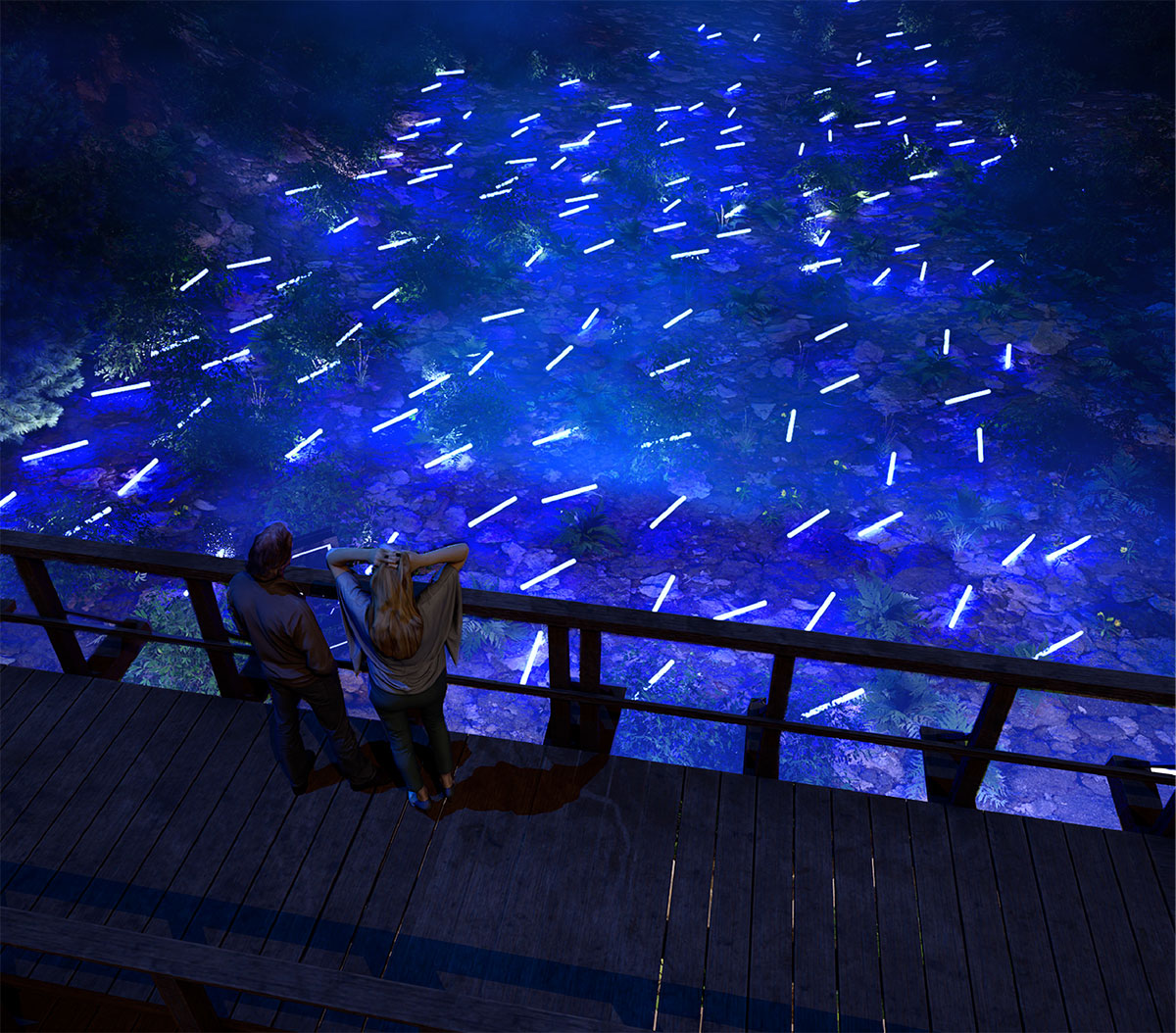 From an education in chemistry, Rafael Lozano-Hemmer’s early career in a molecular-recognition lab influenced his conceptual and practical approach to creating art. As early as the 1990s, Lozano-Hemmer worked with custom software and surveillance technologies to create interactive artwork. His work often invites viewers to provide a biometric “snapshot” of themselves—whether their fingerprint, heartbeat, or portrait—that the artist then transforms into a dynamic, collective landscape and representation of both anonymity and community.
From an education in chemistry, Rafael Lozano-Hemmer’s early career in a molecular-recognition lab influenced his conceptual and practical approach to creating art. As early as the 1990s, Lozano-Hemmer worked with custom software and surveillance technologies to create interactive artwork. His work often invites viewers to provide a biometric “snapshot” of themselves—whether their fingerprint, heartbeat, or portrait—that the artist then transforms into a dynamic, collective landscape and representation of both anonymity and community.
By Dimitris Lempesis
Photo: Crystal Bridges Museum of American Art Archive
Rafael Lozano-Hemmer presents “Listening Forest”, a new interactive exhibition featuring immersive installations that is designed to be experienced at night. Lozano-Hemmer is an award-winning media artist originally from Mexico City. He creates platforms for public participation using technologies such as robotic lights, digital fountains, computer vision, artificial intelligence, and telematic networks. In the exhibition Lozano-Hemmer creates artworks that respond to the visitor’s presence and participation, highlighting the unique physical characteristics of individuals while simultaneously creating connections between strangers and the landscape itself. The installations of the exhibition sense visitors and interact playfully and poetically with their participation. The installations highlight the interconnectedness of visitors in the forest and are aimed at creating feelings of wonder, joy, common purpose and reflection. The exhibition also features a commissioned soundtrack composed and recorded by British electronic musician Scanner (Robin Rimbaud). The exhibition includes the following eight installations: “Recorded Assembly” that merges the facial features of participants into a constantly changing portrait of previous forest visitors. Acting as an invitation to the exhibition , the first work you see consists of three monitors. Across these screens, faces blur and combine into an ever-changing composite portrait. As you approach, your likeness is quickly mapped and mixed with a collection of 600,000 previous participants to create an abstract and constantly modulating landscape of humanity. In its more utilitarian applications, facial recognition software like this is often used for surveillance, where it enlists biometric data to single out and police individuals. Here, Lozano-Hemmer employs the same technology to emphasize our shared humanity, creating a composite portrait of faces that revels in anonymity. The resulting imagery creates a poetic inversion of this software, one that emphasizes inclusion rather than division. “Arkansas Text Stream” consists of brief texts sourced from Northwest Arkansas community members animated as a slow stream of letters projected on the footpath that transform into phrases as the presence of people is detected. Flowing from just beyond view, a rush of letters projects onto a 70-yard-length pathway, slowly traveling downstream. Moving according to fluid dynamics in a non-repeating pattern, the letters’ journey is programmed to be as unpredictable as the motion of water. As you walk, your body creates ripples and jetties among the texts. If you slow or stop, phrases will pool around your feet, revealing wisdom from the past, reflections on the present, and hopes for the future—all sourced from regional community members. In “Pulse Forest” 3,000 lightbulbs flicker in time to the literal hearts of the Ozarks. Temporarily displaying the heartbeats of the last 3,000 participants, the installation expresses the fleeting nature of life, where every heartbeat replaces the one before. Like a memento mori, the work is a gentle reminder of death’s inevitability, presented in a way that celebrates the beauty of presence and life. Lozano-Hemmer took inspiration from a scene from the 1960 Mexican film, “Macario”. In a scene from this film, thousands of candles inside a cave each symbolize a single life. The artist combined that visual with the experience of hearing the dual heartbeats of his twins. Fittingly, the pulsing lights and gentle chorus of beats create a near-womblike environment in the forest.
“Thermal Drift” features a towering projection and glows with the most generous use of color in the exhibition. Using a thermal camera, the familiar color scheme—sometimes associated with surveillance footage—is now rendered as colorful particles. As you stand in front of the screen, these dots gradually drift outward, bouncing and swirling around as you disrupt their paths with your own movements. Synched with an audio track, a dark screen glitches and shutters in time with the audio before opening up to a brilliant screen of color and particles. As the track reaches its close, the heat signatures become more ragged and erratic as the entire image returns to black, and the loop repeats in an endless cycle of renewal. “Remote Pulse” consists of two identical pulse-sensing stations that connect strangers and beams of light across the forest. Placed on opposite sides of the North Forest, two “Remote Pulse” stations connect strangers across the exhibition. A small terminal at either end has sensors for guests to place their hands. When both sides are activated, you’ll feel the pulse of the stranger on the other side under your own palms. Overhead, a set of pencil-lights pulse in time with the user’s heartbeat while crossing with the stranger’s pulsing beams above the forest. An earlier version of this work, “Border Tuner”, connected participants across the US/Mexico border through heartbeats and the ability to speak to strangers. Constantly adapting to new settings, here Lozano-Hemmer removes the voice component and adds the lights, protecting anonymity as participants create their visible bridge of connection in the sky. “Embodied Light Beacons” that allows guests to control giant, 20-foot-tall stick figures made of light, three giant stick figures meet in a forest clearing. Composed of limbs made of light, each robot-like figure waits motionless until you step behind it and control its arms, legs, and head by moving your own appendages. At this scale, all actions are captured as exaggerated beams of light that illuminate the night sky or enfold a fellow giant in a well-lit embrace. This amplification of size, coupled with the coordinated droning swooshes and sound effects of moving “limbs,” encourages you to view your own body in a new way. In “Voice Forest”, guests can leave a voice recording that will join a chorus of voices left by previous forest visitors. From a distance, a steady murmur of voices radiates from a stand of illuminated trees. As you come closer, it’s apparent that individual voices are coming from specific trees and are punctuated with lights that blink with the words being spoken. Three nearby intercoms invite you to add your own voice to the memory of the forest. Each new addition shifts the recordings from one tree to another, changing the overall hum of the woods. This chorus of new voices is joined by an audio archive selected in conjunction with regional, community partners. They range from historic recordings to more recent soundbites. In “Summon”, a bridge spans a dry ravine scattered with an array of light batons. As you speak or sing, microphones on the bridge transmit those sounds downstream as white streaks of light cascading towards the valley’s vanishing point. After a few minutes of gathering sounds, the batons at the end of the ravine glow blue, a thick fog starts to form, and a cacophonous composite of the gathered sounds slowly creeps toward the bridge. Eventually, this wall of audio, blue light, and fog engulfs you completely. Once the moment passes, the setting becomes quiet in anticipation of a new round of sound offerings. If the forest is always listening, “Summon” expresses that idea in a tangible way by giving visitors back what they gave to it.
Photo: Rafael Lozano-Hemmer, Summon_simulation, 2022, Antimodular Studio
Info: Crystal Bridges Museum of American Art, 600 Museum Way, Bentonville, AR, USA, Duration: 30/8-31/12/2023, Days & Hours: Mon, Wed & Sat-Sun 11:00-18, Thu-Fri 11:00-20:00, https://crystalbridges.org/
